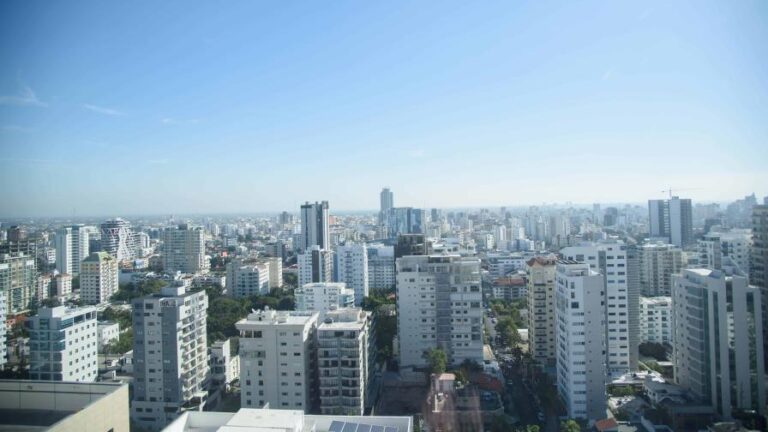
- Food. The Consumer Price Index (CPI) for the Food and Non-Alcoholic Beverages group decreased by 0.17%, due to price reductions in items such as green and ripe plantains, fresh chicken, and potatoes, according to the Central Bank.
The year-on-year inflation rate in the Dominican Republic stood at 3.71% in April 2025, marking 17 consecutive months within the target range of 4.0% ± 1.0%, the Central Bank (BCRD) reported on Tuesday.
This performance places the country among the non-dollarized economies in Latin America with the lowest inflation, according to the monetary authority.
The report highlights that monthly inflation of the CPI was just 0.03% in April, reflecting price stability driven by decreases in key categories such as Transport (-0.32%), Food and Non-Alcoholic Beverages (-0.17%), and Communications (-0.74%).
Among the products that helped contain prices were plantains, fresh chicken, bananas, potatoes, and other highly weighted basic food items.
The BCRD explained that core monthly inflation was 0.16% in April 2025, the lowest monthly variation rate in the past 65 months, that is, since December 2019.
Thus, core year-on-year inflation declined from 4.24% in March to 4.13% in April 2025, remaining within the target set by the Central Bank.
This indicator provides clearer signals for monetary policy decisions, as it excludes items that typically do not respond to liquidity conditions in the economy—such as foods with high price volatility, fuels, and regulated services like electricity tariffs, transportation, as well as alcoholic beverages and tobacco.
The Transport group CPI registered a variation of -0.32%, due to lower prices for automobiles and airfares. The fuel subsidy implemented by the Executive Branch has kept domestic fuel prices unchanged, helping to moderate this group’s impact on the general CPI.
Similarly, the Communications group contributed to the decline with a -0.74% variation, driven by price reductions in bundled telecommunications services, particularly those related to online data transmission (streaming).
The Miscellaneous Goods and Services group showed 0.44% inflation, due to price increases in some personal care services and products. The Health group posted a 0.70% variation, mainly attributed to price hikes in antihypertensive medications.
The Housing group recorded a 0.19% increase due to rising housing rental service prices.
Meanwhile, the 0.23% variation in the Restaurants and Hotels group was explained by higher prices in daily meal services.
Regional Inflation
The Ozama region (National District and Santo Domingo) and the South showed negative rates of -0.09% and -0.07%, respectively, thanks to declines in food and transport.
In contrast, the Eastern region recorded the highest regional inflation at 0.28%, due to increases in ground transportation.
By Income Quintile
Households in the lower income quintiles (1 to 3) faced inflation rates between 0.09% and 0.13%, while higher income households (quintiles 4 and 5) registered nearly zero increases of 0.01% and 0.02%, benefitting from lower vehicle prices, airfares, and telecom services.
Income Quintiles Breakdown
The Central Bank report also breaks down CPI variation by socioeconomic strata, showing that lower-income households (quintiles 1, 2, and 3) experienced slightly higher inflation rates of 0.09%, 0.13%, and 0.12%, respectively. In these groups, although food prices declined, the effect was offset by increases in ground transportation services, personal care products, and prepared foods outside the home. Higher-income households (quintiles 4 and 5) showed more moderate variations, just 0.01% and 0.02%, due to reductions in car prices and other items.
Source:


